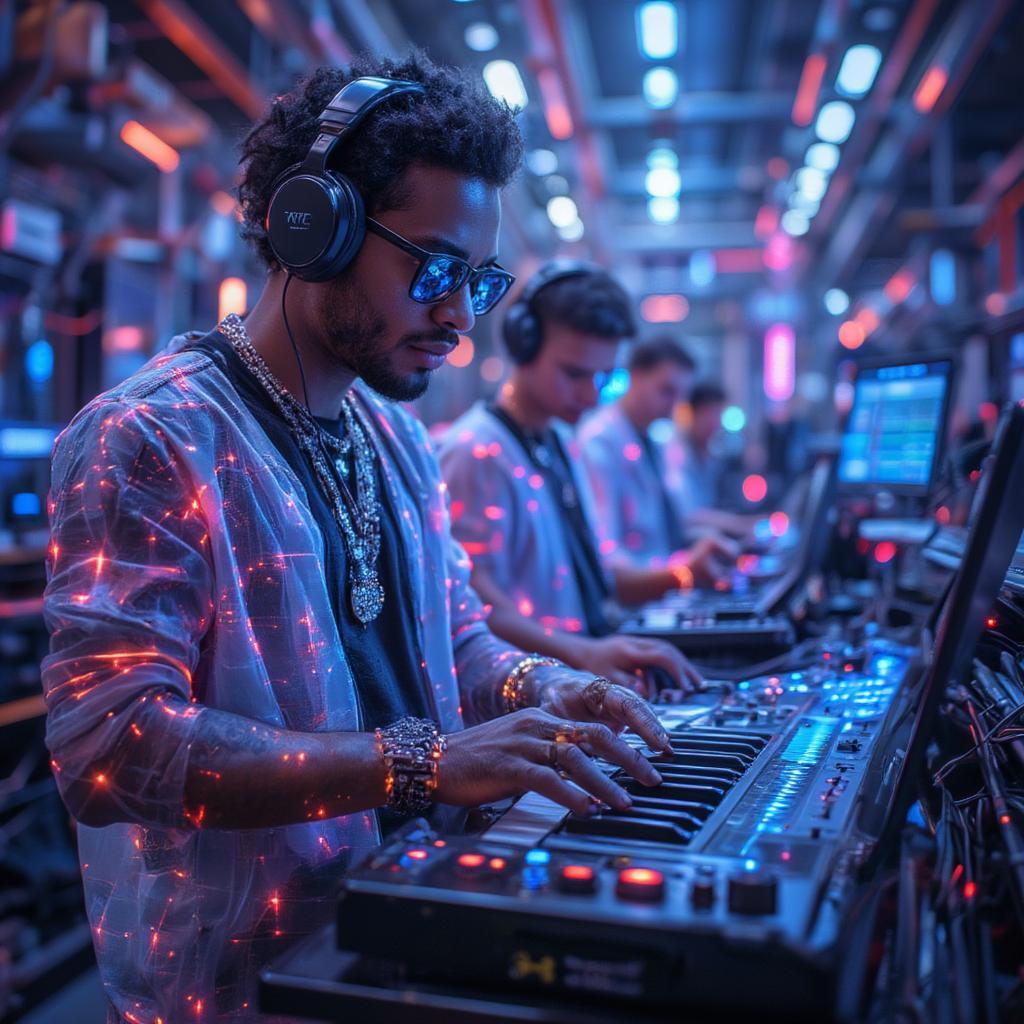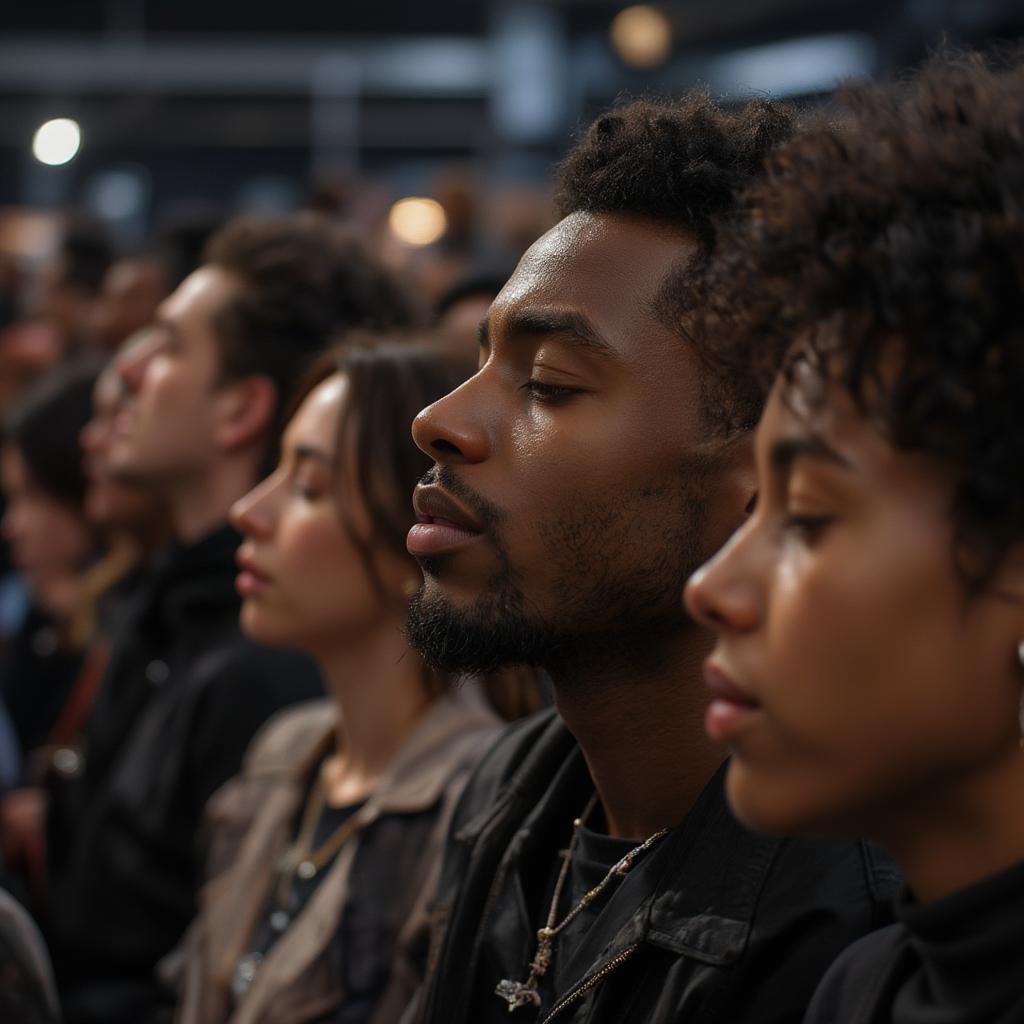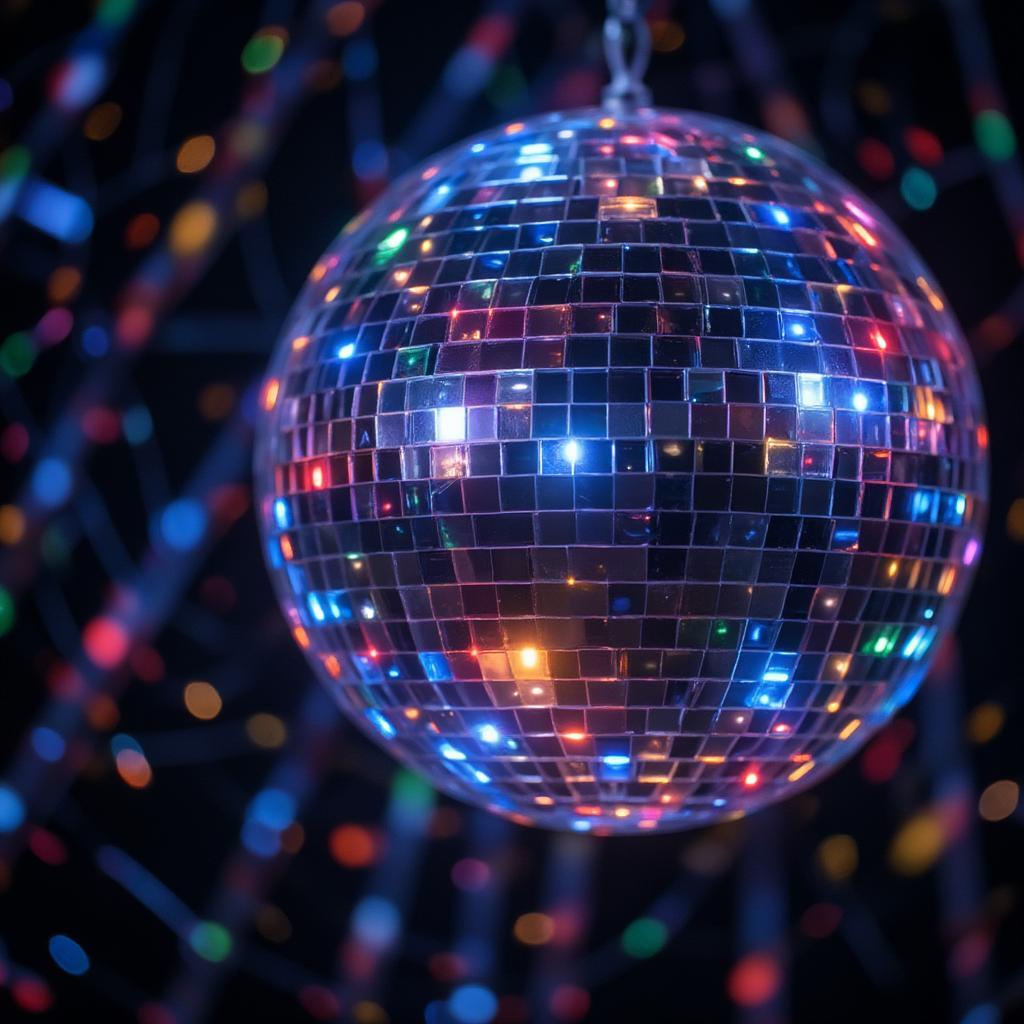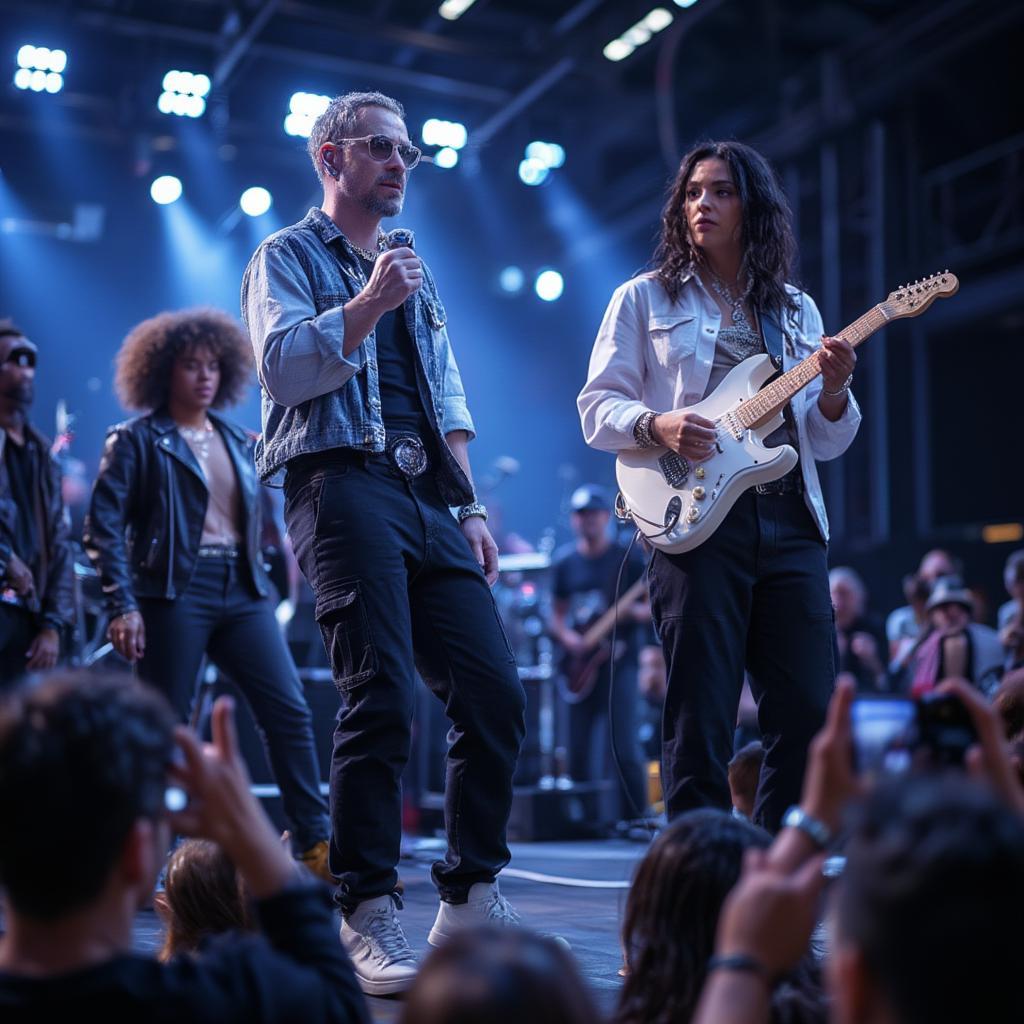Decoding Contemporary R&B Music: A Deep Dive into the Genre’s Soul

What Exactly is Contemporary R&B Music?
Contemporary R&B, often simply called R&B, is a genre that emerged in the 1980s as a modern interpretation of the classic rhythm and blues sound. It incorporates elements from soul, funk, pop, hip-hop, and even electronic music, creating a unique and diverse sonic landscape. Unlike the raw, blues-infused sounds of the 1950s r&b, contemporary R&B often features slick production, smooth vocals, and emotionally charged lyrics. Think of it as the evolution of soul, a polished and refined expression of love, loss, and everything in between.
The Key Ingredients: Understanding the Musical Recipe
The unique character of contemporary R&B stems from a combination of distinctive musical elements. Let’s break down some of the key ingredients that contribute to the genre’s signature sound:
- Vocals: Smooth, soulful, and often featuring intricate harmonies. Vocalists frequently utilize melisma (singing one syllable over several notes) and vibrato to add emotional depth. Think of artists like Alicia Keys or H.E.R., whose vocal prowess is a hallmark of the genre.
- Melodies: Catchy and memorable, often built around strong hooks and emotional progressions. The melodies in contemporary R&B are designed to resonate with the listener, creating a powerful connection through sound.
- Instrumentation: A blend of traditional instruments like guitars, keyboards, and drums with modern synths, drum machines, and samples. Producers skillfully weave these elements together to create a lush, dynamic soundscape.
- Lyrics: Often exploring themes of love, relationships, heartbreak, and personal growth, with a focus on raw emotional honesty. Contemporary R&B delves into the intricacies of human connection with vulnerability and depth.
- Production: Highly polished and layered, with a focus on creating a sophisticated and engaging listening experience. The production is often what sets contemporary R&B apart from its predecessors, using modern techniques to enhance the emotional impact of the music.
How Has Contemporary R&B Evolved Over the Years?
Contemporary R&B hasn’t stayed static; it’s a constantly evolving genre that’s shaped by trends, technologies, and social changes. From the new jack swing sounds of the late 80s and early 90s, to the hip-hop infused R&B of the early 2000s, and now the more experimental sounds of today, the genre has consistently reinvented itself. The influence of hip-hop is particularly significant. Many contemporary R&B tracks feature hip-hop beats and rhythmic patterns, blurring the lines between the two genres and creating a dynamic fusion.
“The beauty of contemporary R&B lies in its ability to draw from the past while boldly stepping into the future. It’s a conversation between generations, a dialogue through melody and rhythm.” – Dr. Evelyn Reed, Music Historian
Key Subgenres and Influences
Within the broader scope of contemporary R&B, several subgenres and influences have emerged:
- Neo-Soul: A more organic and soulful offshoot, often featuring live instrumentation and socially conscious lyrics. Artists like Erykah Badu and D’Angelo are pioneers of this style.
- Trap R&B: A fusion of R&B with trap beats, creating a darker, edgier sound. This style is marked by its heavy bass and hypnotic rhythms.
- Alternative R&B: A more experimental and genre-bending approach, incorporating elements of electronica, indie, and even ambient music. Artists such as The Weeknd and Frank Ocean have pushed the boundaries of what R&B can be.
- Pop R&B: A commercially successful blend of R&B with pop sensibilities, emphasizing catchy hooks and mainstream appeal. Artists like Beyoncé and Rihanna have achieved massive success in this subgenre.
Why is Contemporary R&B So Popular?
The enduring popularity of contemporary R&B can be attributed to several factors:
- Emotional Resonance: It taps into universal emotions, from the euphoria of love to the ache of heartbreak, making it relatable to a wide audience. This emotional depth allows listeners to connect with the music on a personal level.
- Innovation: The genre continually evolves, incorporating new sounds and production techniques, keeping it fresh and exciting. This constant reinvention is what allows contemporary R&B to remain relevant in a changing musical landscape.
- Cultural Impact: It plays a significant role in shaping popular culture, influencing fashion, language, and social trends. It reflects and drives the cultural zeitgeist, making it more than just music; it’s a cultural force.
- Diversity: The genre encompasses a wide range of styles and subgenres, catering to diverse tastes and preferences. There’s a subgenre for everyone, contributing to its broad appeal.
- Accessibility: While sophisticated, the genre’s core musicality makes it accessible to both casual listeners and die-hard fans. Its blend of complexity and familiarity makes it universally appealing.
What Does the Future Hold for Contemporary R&B Music?
The future of contemporary R&B is bright and full of potential. We’re likely to see more experimentation, genre-blending, and a continued push for authentic expression. As technology continues to advance, we’ll likely see new production techniques and sonic innovations that further define the genre. Artists will continue to push boundaries, explore new themes, and create unique musical experiences that resonate with audiences worldwide. Artists are increasingly using their platforms to speak to contemporary social issues, adding depth and purpose to their music. The sounds of 90 hits r&b continue to inspire a new generation.

“The future of R&B lies in its ability to embrace change while staying true to its soulful core. It’s about pushing boundaries and connecting with listeners on a deeper emotional level.” – Marcus Johnson, Music Producer and Composer
How Can You Dive Deeper into Contemporary R&B?
If you’re looking to explore the world of contemporary R&B, here are some starting points:
- Listen to a Variety of Artists: Don’t limit yourself to just a few names; explore the diversity of the genre. Branch out and discover artists both mainstream and underground.
- Explore Subgenres: Dive into specific subgenres that interest you, such as neo-soul, trap R&B, or alternative R&B. Each subgenre offers a unique take on the core R&B sound.
- Pay Attention to the Lyrics: Engage with the storytelling and emotional depth of the lyrics. They are a vital part of the genre’s appeal and provide insight into the artist’s perspective.
- Research the Producers: Learn about the producers behind the tracks you enjoy, as they often play a significant role in shaping the overall sound. Understand the craft that goes into making the music.
- Attend Live Shows: Experience the music in a live setting to fully appreciate the energy and passion of the artists. Nothing beats the energy of a live performance, especially for genres rooted in live performance traditions.
In conclusion, contemporary R&B music remains a vital and dynamic force in the world of music, constantly evolving and reflecting the complexities of modern life. Its blend of soulful melodies, innovative production, and emotionally charged lyrics continues to captivate and resonate with audiences worldwide. Its future is filled with potential, promising even more innovation and powerful artistic expression.
Frequently Asked Questions About Contemporary R&B Music
-
What distinguishes contemporary R&B from classic R&B?
Classic R&B, rooted in the blues, features raw vocals and organic instrumentation, while contemporary R&B incorporates modern production techniques, synthesizers, and diverse musical influences, resulting in a more polished and often more layered sound. It is a natural evolution, reflecting changing tastes and technological advancements. -
Who are some of the most influential contemporary R&B artists?
Influential artists include Beyoncé, Frank Ocean, H.E.R., The Weeknd, SZA, and Miguel, all of whom have shaped the genre with their distinct styles and innovative approaches. These artists have pushed the boundaries of what R&B can be. -
What role does hip-hop play in contemporary R&B?
Hip-hop has a significant impact on contemporary R&B, with many songs featuring hip-hop beats, rhythmic patterns, and lyrical styles, blurring the lines between the two genres and creating a dynamic fusion that is both current and captivating. -
What are the key elements of a contemporary R&B song?
Key elements include smooth vocals, catchy melodies, layered instrumentation, and emotionally honest lyrics. The production is also a vital component, creating a sophisticated and engaging sound. -
How has technology impacted the evolution of contemporary R&B?
Technology has had a significant impact, leading to the use of synthesizers, digital audio workstations, and diverse production techniques, allowing artists to experiment with sounds and push creative boundaries, thereby evolving the genre itself. -
Is there a difference between neo-soul and contemporary R&B?
While neo-soul is a subgenre of R&B, it generally has a more organic, live instrumentation approach with socially conscious lyrics. Neo-soul can be seen as a return to the roots of soul with a modern edge, while contemporary R&B takes inspiration from a wider range of sources. -
Why does contemporary R&B often focus on themes of love and relationships?
Love and relationships are universal themes that resonate with many listeners, allowing contemporary R&B to tap into raw emotions and create a deeper connection with the audience, thereby enabling it to remain relatable. -
How do I discover new contemporary R&B artists?
Explore music streaming platforms, listen to playlists, follow music blogs, and attend live shows. These are great ways to discover new artists and broaden your appreciation for the genre’s many subgenres. -
How has the concept of “soul” evolved within contemporary R&B?
The concept of soul has evolved to encompass not just musical elements, but also lyrical themes of vulnerability and social consciousness. Modern R&B utilizes sonic landscapes that are both modern and emotionally resonant, echoing soul’s roots while simultaneously innovating its sound.



